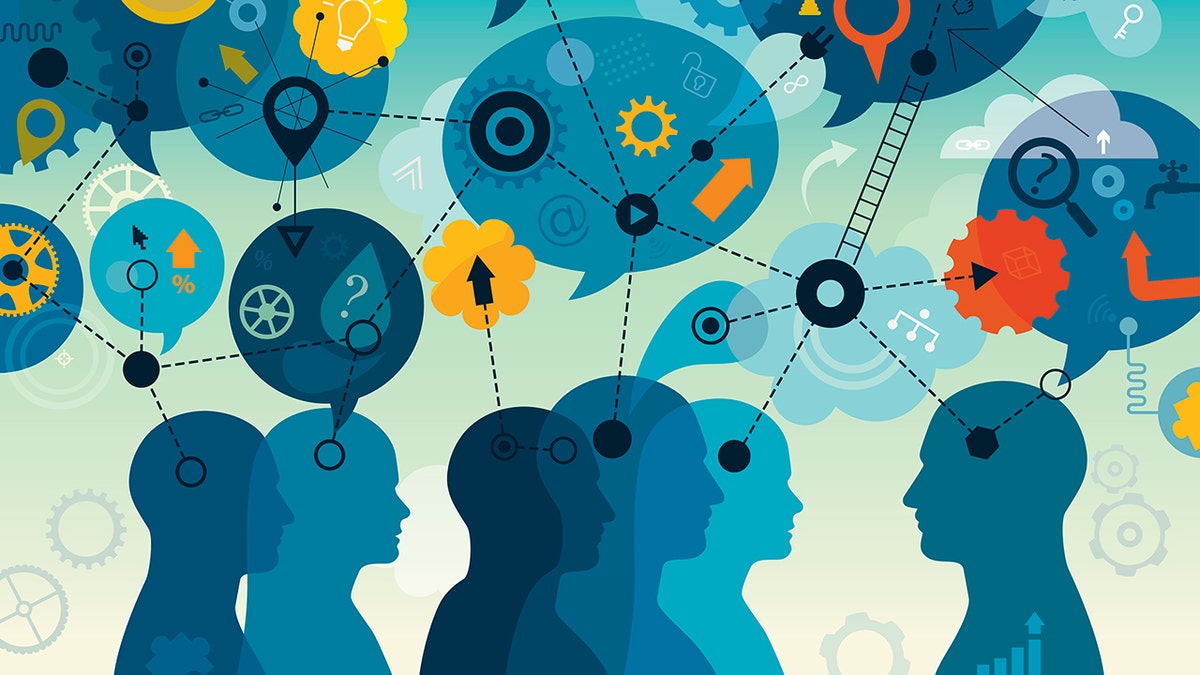
Vibrant vector illustration is showing a teacher and adult students in the middle of the process of facilitating learning. (Credit: iStock)
Sending thoughts to another person’s brain may seem like a science fiction film plotline, but this ability may be closer to reality than expected. A team from Carnegie Mellon University and the University of Washington released a study which describes how they connected the brains of three different people, allowing them to communicate without seeing or speaking to each other.
“In 2013, we demonstrated the first brain-to-brain interface for direct communication and collaboration between two human brains,” Rajesh Rao, an author of the study from the University of Washington, told Newsweek. “The question that remained unanswered was whether one could create a 'social network' of more than two brains collaborating to solve task that none of the individual brains could. BrainNet is the first proof-of-concept demonstration of this idea.”
The BrainNet system employs technologies called electroencephalograms and transcranial magnetic stimulation that enables three participants to passively send brain signals. For this study, the trio were linked using brain-to-brain interactions to solve a task that each of them individually could not do alone.
IPHONE CAN BE TURNED INTO A BODYCAM TO RECORD POLICE
The task involved a Tetris-style game where one individual controlled falling blocks, while two others had to tell the player how the blocks should be rotated. In order to accomplish this, the players looked at one of two flashing lights on the sides of the game screen.
While one “player” could sense the flashing lights, they could not see them. The only way they could communicate was through a skull cap that relayed the brain signals of the other two participants. The player who controlled the blocks could then see whether the placement was successful even though they could not view the blocks until that point in time. The recent study is significant as it is the first successful demonstration of a “multi-person noninvasive direct brain-to-brain interaction for solving a task.”
“Brain-to-brain interfaces have the potential to transform the way humans communicate and collaborate with each other,” Rao said. “They also have the potential to shed new light on how the human brain works and help restore function in people with neurological conditions.”
After conducting the experiment five separate times, the accuracy of the study is impressive since it is at about 80 percent. In the future, the team is planning to make the system more comprehensive by passing additional data between the participants.




















